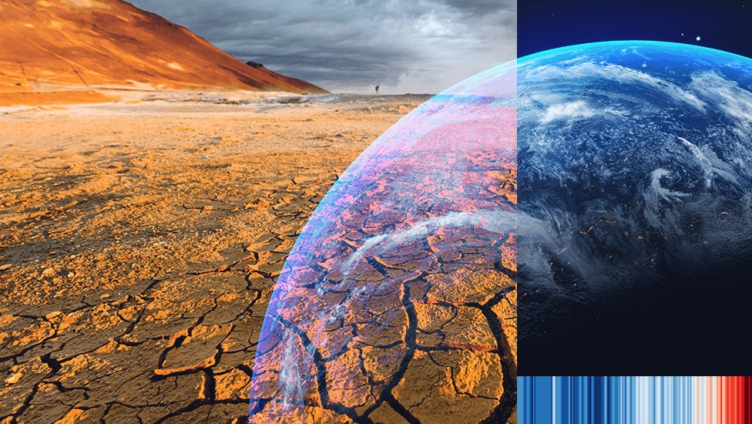
Audio By Carbonatix
A new World Meteorological Organization (WMO) update is warning that an El Niño event may develop in the coming months, following three consecutive years of an unusually stubborn and protracted La Niña that influenced temperature and rainfall patterns around the world.
According to a study published last year by the UK Met Office, the WMO's lead center for annual to decadal climate predictions, there is a 93 percent chance that at least one year until 2026 will be the warmest on record, and a 50:50 chance that the global temperature will temporarily rise to 1.5°C above pre-industrial levels.
Hottest year in three years, 1.5 degrees Celsius to be broken—this could mean unprecedented heat waves and other climate impacts all over the world.
The combination of El Niño and climate change has made 2016 the warmest year on record.
A new regional climate outlook released on February 22 warned that the disastrous situation in the Horn of Africa would worsen because the upcoming March-May rainy season is expected to be poor.
The current La Niña began in September 2020 and will last until the boreal summer of 2021. La Niña is defined as a large-scale cooling of ocean surface temperatures in the central and eastern equatorial Pacific Ocean, which is accompanied by changes in tropical atmospheric circulation. In affected areas, it usually has the opposite effect on weather and climate as El Nino.
WMO says, once the ongoing La Nina event, which is the cooling phase of ENSO and has the opposite effects of El Niño, ends in March, there is a high chance (90%) of neutral conditions in the equatorial Pacific Ocean from March to May.
“The first triple-dip La Niña of the 21st century is finally coming to an end. La Niña’s cooling effect put a temporary brake on rising global temperatures, even though the past eight-year period was the warmest on record. If we do now enter an El Niño phase, this is likely to fuel another spike in global temperatures,” said Prof. Taalas.
El Niño and La Niña are natural occurrences. However, it is occurring against the backdrop of human-caused climate change, which is raising global temperatures, altering seasonal rainfall patterns, and making our weather more extreme.
Both are major – but not the only - drivers of the earth’s climate system.
Experts in Ghana have already issued warnings about the hot and dry conditions that have prevailed in many areas.
According to the Ghana Meteorological Agency's (GMet) harmattan seasonal prediction advisory, there will be dry conditions.
Latest Stories
-
Ghana suffer 1-0 loss against South Africa in international friendly
5 minutes -
When barriers to healthcare push people to treat themselves
6 minutes -
Fire outbreaks decline by 13% in Ashanti Region between 2024 and 2025
9 minutes -
Photos: Asantehene arrives in Accra to present Bawku mediation report to President Mahama
25 minutes -
Kpandai re-run: Supreme Court decision only defers NPP’s defeat – Tanko-Computer
48 minutes -
Annoh-Dompreh demands Ministerial reshuffle as absences stall Parliament
52 minutes -
Police arrest 2 suspects after viral child abuse video in Agona Jamasi
1 hour -
Kloma Gbi takes ‘Taking Them Along’ career mentorship programme to Asesewa
1 hour -
2026 World Cup: Nketiah, Hudson-Odoi will make Black Stars stronger – Former Sports Minister
1 hour -
VAST Ghana demands immediate ban on alcohol industry sponsorship of school events
1 hour -
Be proactive with changing trends in regulatory and tax landscape – Deloitte Partner to businesses
1 hour -
Supreme Court order only suspends Kpandai rerun, does not reinstate Nyindam – Defeamekpor
1 hour -
Aquaculture players validate framework for Blue Food Innovation Hub
2 hours -
JoyBusiness Van: Rose Aluminium moulds Ghana’s cookware industry
2 hours -
Atiwa East DCE must resign or be sacked – Senyo Hosi
2 hours

